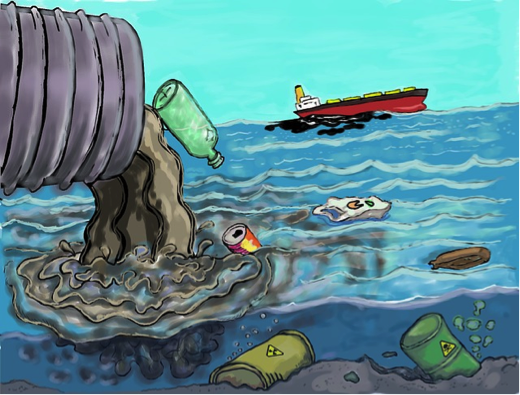“The Destruction Of Our Environment – A Goan Perspective” is an interesting article to give a little background information on the Windsor seminar written by Travel Counsellor, Christopher Pereira.
[color-box]
India has seen its fair share of disasters over the years resulting in significant loss of lives.
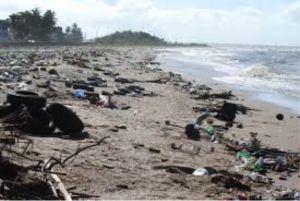
Bhopal Gas tragedy
Recalling the night of December 2-3 1984 in Bhopal still sends a shiver down the spine of those who were there that fateful night when toxic Methyl Isocyanate (MIC) gas leaked from the factory owned by Union Carbide. The gas silently spread out engulfing the densely populated areas around the factory.
People woke up and ran outside desperately gasping for breath only to take in more of the deadly gas. Many died in their sleep while others went blind. Over time, several people suffered from post trauma diseases, while many continue to suffer even today.
This was one of the worst chemical disasters globally that resulted in over 10,000 losing their lives and half a million people suffering long term damage and illness.
Unfortunately, several industries in India still continue to operate with very little government pressure on implementation of safety protocols as per Standard Operating Procedures laid down by the authorities.
But the bigger concern has been man-made disasters that have been a result of human carelessness, callousness, or sheer lack of foresight and planning that has ended up with large number of innocent people losing lives, all of which were preventable.
But it’s not government alone that must be blamed, after all, it’s we the people, that allow the government of the day to move on with little accountability or punishment to those in power at the political, bureaucratic or business level.
It’s time for accountability.
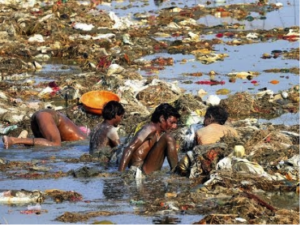
Pollution In Goa:
The pollution in Goa’s air is almost visible to the naked eye, especially when driving over the Mandovi bridge into Panjim. It’s almost as though the state capital is covered in a faint haze.
Only as one gets closer does he realize that it’s pollution and not mist.
The air quality has gotten worse and could soon leave the city’s residents breathless and other towns and cities are no better off.
Out of all of Goa’s major towns, Vasco appears to be the most polluted. Ponda, Panaji, Mapusa, and Margao follow in quick succession. All this is happening due to the amount of construction as well as an increase in the number of vehicles on the roads.
Irresponsible and Dangerous Mining Practices In Goa:
Illegal mining in Goa is one of the biggest environmental disasters in Goa. Mining has caused irreversible damage to forests, agriculture, fisheries and water aquifers
An estimated 100,000 people living in the villages in four talukas in north and south Goa have lost their source of living with their farms destroyed by mining silt and water sources contaminated.
The silt from mining has entered the fields which now resemble a large quagmire. Tukaram Velip, a resident says that the perennial stream that irrigated the village fields is polluted and agriculture has been completely destroyed. People are left with no means of earning their living, he says.
Goa has 90 operational mines spread along the Western Ghats in an area of 150 to 200 sq km. Most of the legal and illegal mines are in forest areas.
Most of the mines in the state are concentrated in four talukas—Bicholim in north Goa, and Sattari, Sanguem and Quepem talukas in south Goa. Activists say that an estimated 100,000 people living in the villages in these four talukas are affected.
Besides loss of livelihood, they are also suffering from the adverse effects of air noise and water pollution. “Mining has caused irreversible damage to forests, agriculture, fisheries and water aquifers,” says Abhijit Prabhudesai, member of Goyencha Xetkarancho Ekvott (GXE), a non-profit in Margaon city.
He says the government has allowed mining even in forest areas despite the presence of wildlife.
The mining has also affected the Salaulim dam on the Salaulim river in Sangeum taluka, which supplies drinking water to half the state’s population, besides providing water for irrigation and to industries.
Over 20 mines are operating in the vicinity of the dam. Heavy silt has settled in the dam reservoir because of mining.
An official in the state water resources department admits that mining has damaged the state’s water resources and says the department is now reassessing the life span of the Salaulim dam. The dam was commissioned in the 1970s with an expected life span of 100 years.
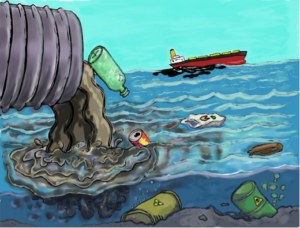
Environmental Impact In Goa Today:
Uncontrolled building activity has taken a heavy toll of the old heritage structures.
- Urban wetlands have been encroached.
- Sand dunes have been flattened.
- Salt pans have been reclaimed.
- Traditional drainage systems have been blocked.
- Panaji experiences incessant flooding in past few years.
- Construction activity on the unstable slopes of Altinho has caused landslides. More than eight million litres of sewage is discharged in the Mndovi river without any secondary treatment.
- The Mandovi estuary is heavily polluted.
- A large number of scrapyards is another menace which the urban Goa experiences.
- Traffic congestion
- Growth of slums and scrapyards
Tourism To Goa In Not Helping:
The tourism sector has positively boosted the economy of coastal Bardez and Salcete. But with it cultural, social and environmental concerns have also arisen.
Here are the 16 worst changes that have impacted Goa today:
- Change of land use for tourism purpose
- Labour shift from primary sector
- Depletion of the ground water table
- Pollution of water resources
- Destruction of the mangroves, Khazans and salt pans
- Shift of traditional fishermen to water sports business
- Solid waste pollution
- Emergence of mosquitoborne diseases
- Entry of HIV/AIDS
- Rise in alcoholism, gambling and crimes
- The menace of narcotics trade
- Real estate speculation driving up the land prices
- Incessant noise pollution due to trance parties
- Entry of international crime syndicates
- Paedophilia and other sex-related deviant lifestyle
- Growth of peripheral slums
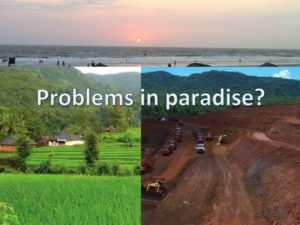
Find out more
In a presentation on Saturday 29th September 2018, former lecturer turned environmental activist John Fernandes will lead a presentation and Question and Answer session on what we can do as Goans, as individuals and as a community, to help reverse some of the impact that is destroying Goa.
Venue address: All Saints Church Centre, Dedworth Road, Windsor, SL4 4JW
Time: 2pm – 3:30 pm.
Refreshments: Teas, coffees, & soft drinks.
Tickets available at Eventbrite, “Goa – Paradise Lost?” https://www.eventbrite.co.uk/e/goa-paradise-lost-tickets-50314604336
Please share this with as many Goans and friends of Goa.
Chris Pereira,
15/9/2018
[/color-box]
Caveat
This post is part of Cllr Wisdom Da Costa’s regular series of Blogs to inform and empower local residents; as he promised in his election leaflet
The views expressed in this article are not necessarily the views of the West Windsor Residents Association (WWRA).

